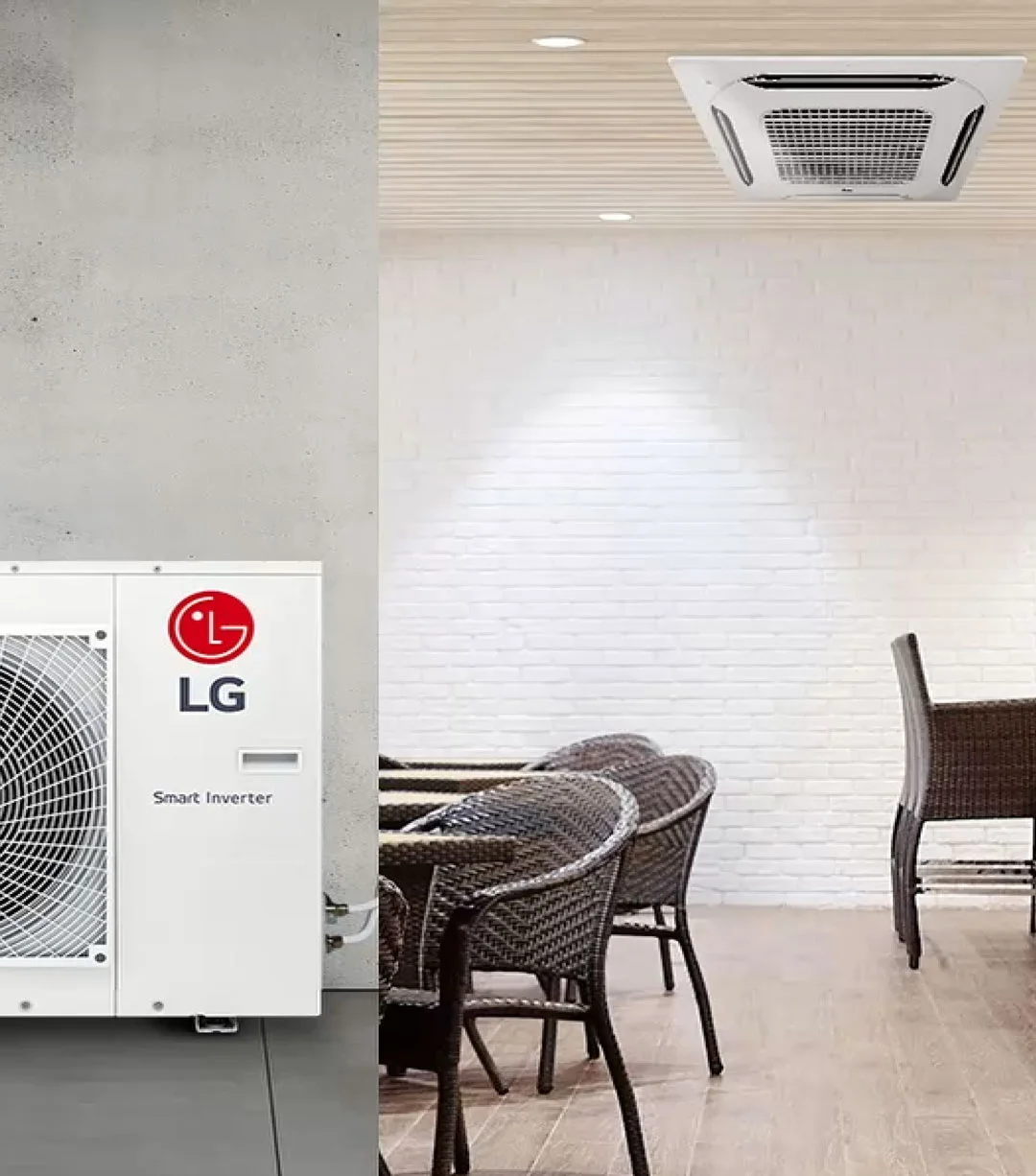Heat pump system
External air is used as a heat source, and the heat pump utilizes a compressor and refrigerant to absorb heat from the air.
In the winter, these pumps use the thermal energy from the outside air and transfer it indoors for heating through a refrigerant (freon). In the summer months, the process is reversed, and the heat pump removes heat from the indoor space and transfers it to the surrounding air.
The main advantage of air-to-air heat pumps is their flexibility and ease of installation. Installing these units is quick and simple, often without the need for major construction work. This makes them ideal for residential homes, apartments, and smaller commercial spaces.
There are three main types of air-to-air heat pumps:
Split Systems (Air Conditioners) - Used in residential buildings, these consist of one outdoor and one indoor unit at a relatively short distance apart.
Multi-Split Systems - Primarily used in residential properties, these consist of one outdoor unit and multiple indoor units (up to 6), allowing for heating or cooling of different rooms at different temperatures.
VRV/VRF Systems - Large systems used in commercial buildings. They consist of one outdoor and multiple indoor units, allowing for heating or cooling, or simultaneous heating and cooling, of different rooms at different temperatures. The long pipelines connect these units.

Various construction solutions for indoor units (cassette units, floor-standing, wall-mounted, ceiling-mounted, ducted, etc.) allow for a wide range of applications. Since the working medium is directly in contact with the air we are heating/cooling and the level of automation is very high, these systems are highly efficient and suitable for new constructions, building renovations, and special-purpose facilities (industrial buildings).


